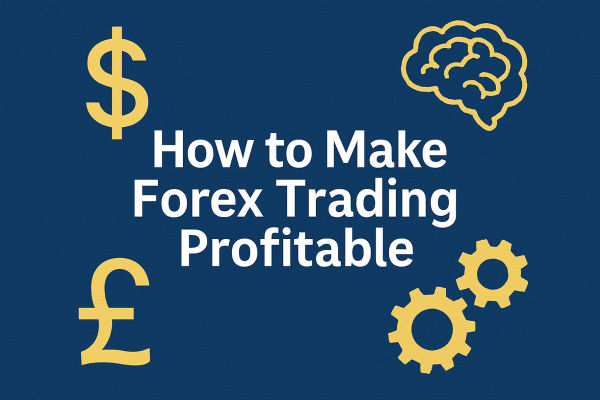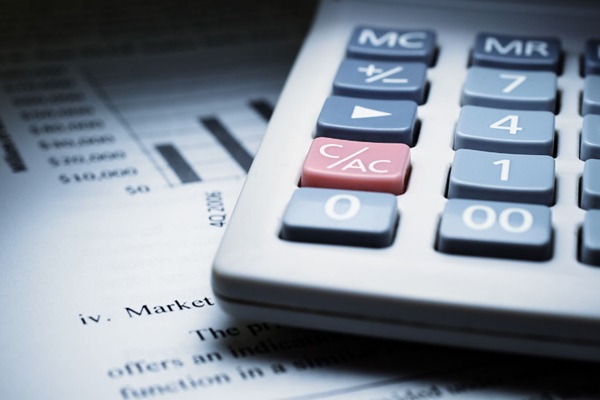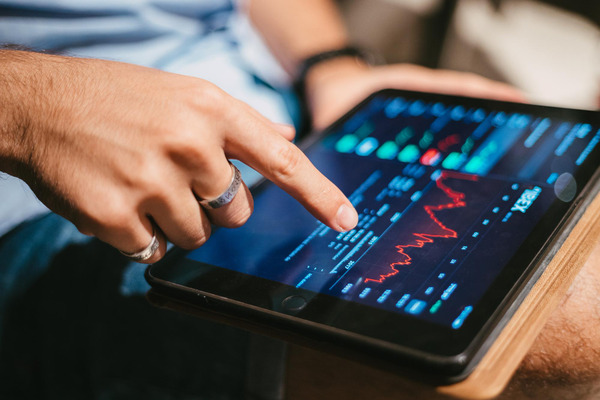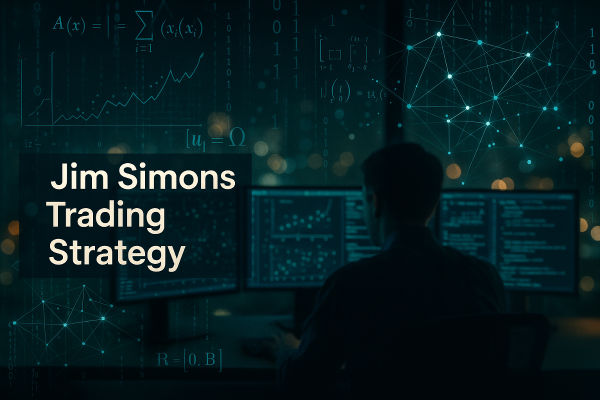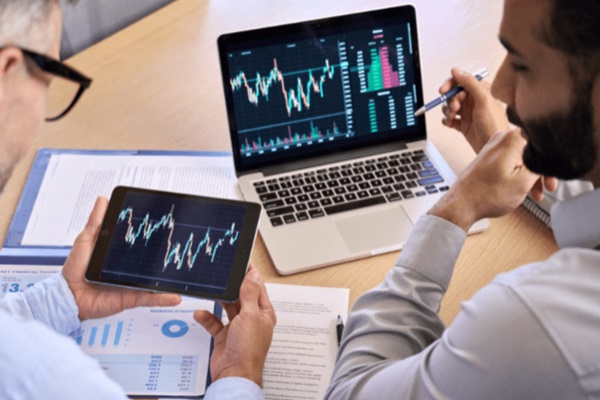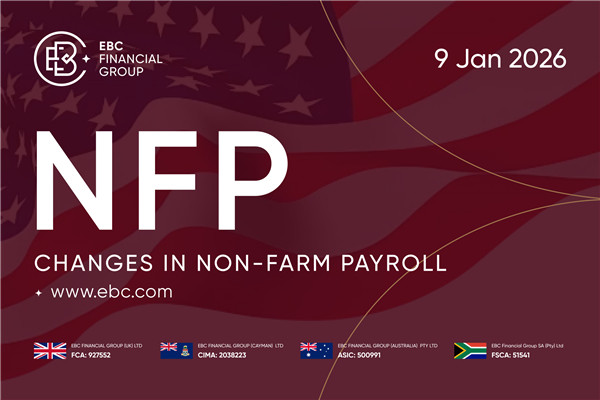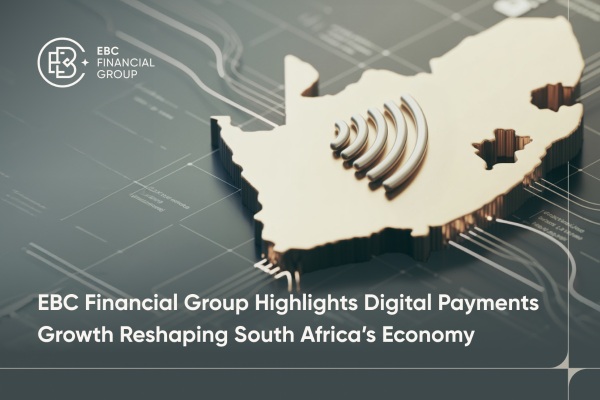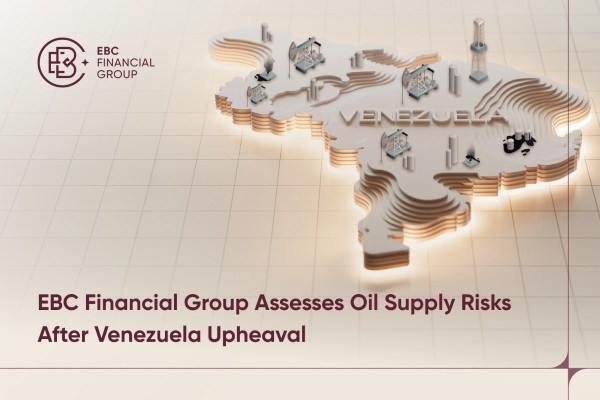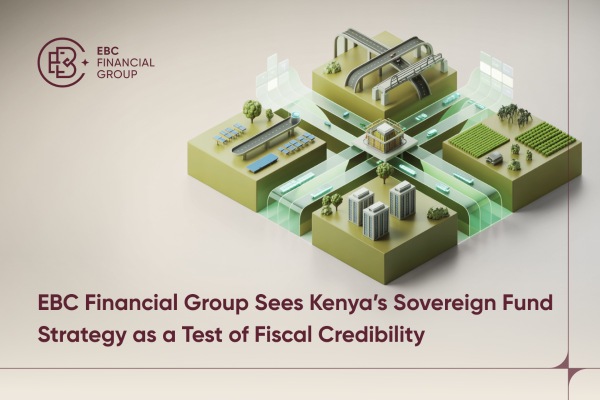Picture this: You're watching your screen as EUR/USD drops 50 pips in minutes. Your heart races. Do you panic and close the trade at a loss, or do you stick to your plan? This single moment separates profitable traders from the 95% who lose money.
The Strategy Behind Profitable Trading
The forex market doesn't care about your bills, your dreams, or your desperation. It's a $7.5 trillion daily battlefield where fortunes are made and lost in seconds. Most traders think success comes from finding the perfect strategy or using expensive software. They're wrong.
After studying thousands of successful traders, one pattern emerges clearly. The winners don't have secret indicators or insider knowledge. They simply understand something the losers don't: trading is 80% psychology and 20% technique.
Your biggest enemy isn't market volatility or economic news. It's the voice in your head telling you to risk more, hold longer, or chase the next big win. Master that voice, and you'll master the markets.
Mindset First: Profits Start in the Head
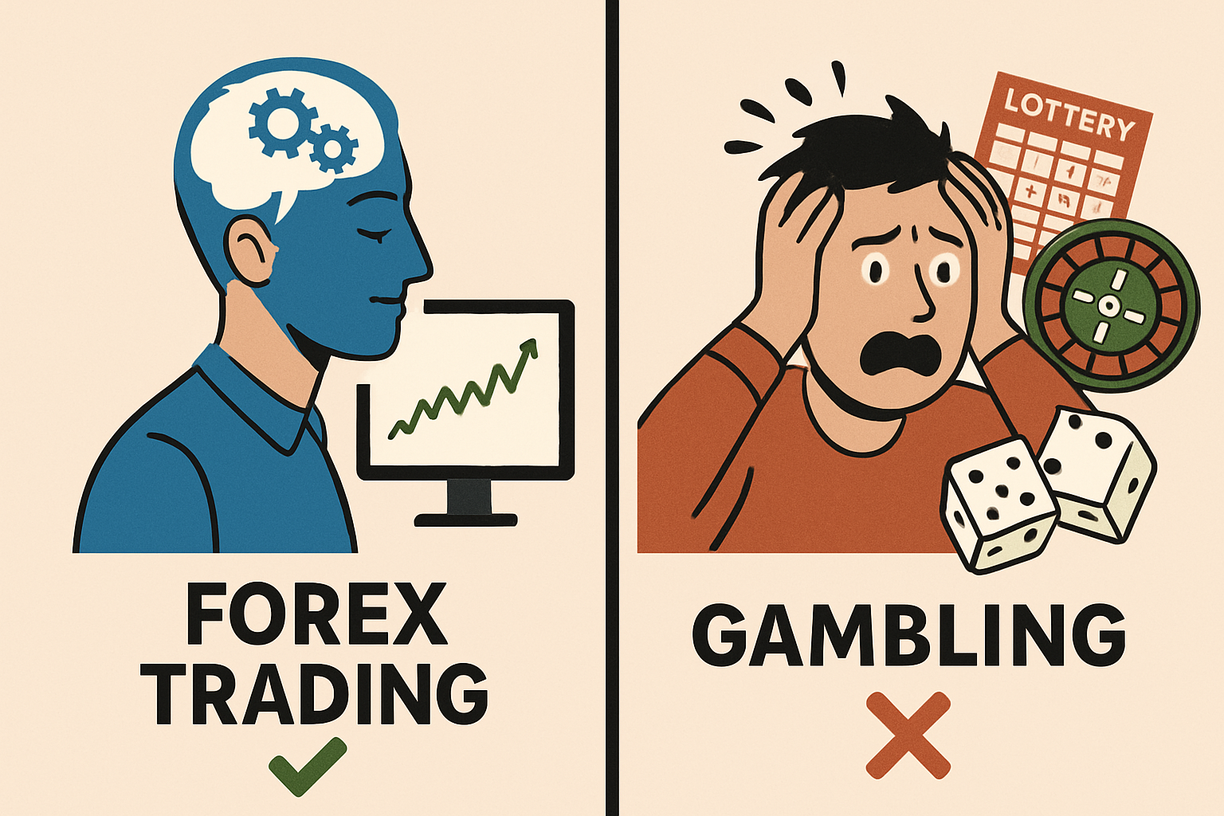
Before you learn a single chart pattern or economic indicator, you need to get your head right. Most traders' approach forex like a lottery ticket. They want quick wins and big payouts. That mindset kills accounts faster than any market crash.
The Profitable Trader's Mindset:
Treat your Trading Account like a business. Would you bet half your business capital on a single deal? Obviously, not. Yet traders do this constantly with overleveraged positions.
Patience Beats Speed Every Time
The market will be here tomorrow, next week, and next year. That perfect setup you're waiting for? It shows up regularly if you know what to look for. Impatient traders chase every price movement and blow up their accounts. Patient traders wait for high-probability opportunities and let their wins compound.
Know Your Risk Tolerance
Here's a simple test: If you lost £1,000 today, would you sleep tonight? If the answer is no, you're trading with scared money. Successful traders only risk capital they can genuinely afford to lose. When you're not worried about the money, you make better decisions.
Discipline Wins
Discipline means taking profits when your plan says too, even if you think the market might go higher. It means cutting losses quickly, even when you "feel" the trade will turn around. Your feelings don't move currency prices. Central banks and economic data do.
Understand the Forex Market Deeply
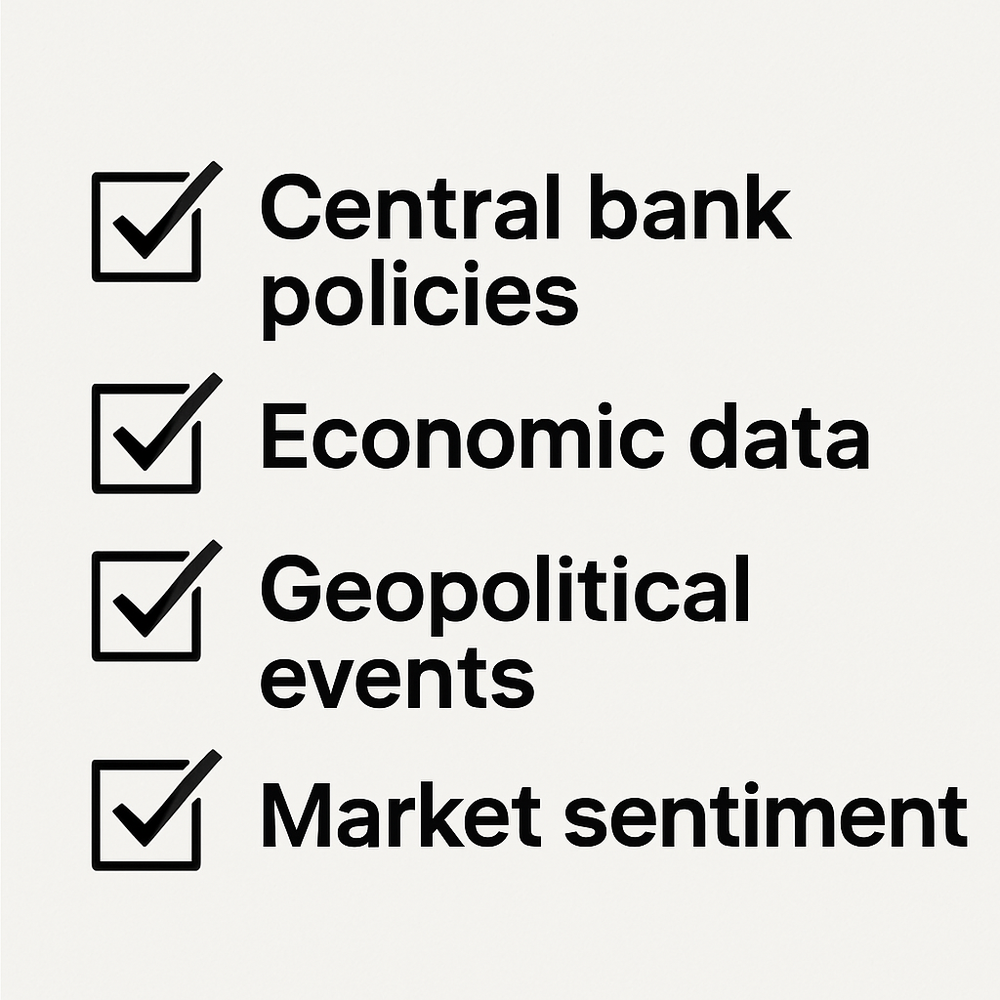
You can't profit from something you don't understand. The forex market isn't random chaos. It moves based on predictable forces: central bank policies, economic data, geopolitical events, and market sentiment.
What Actually Moves Currency Prices
Think of currencies like stocks of entire countries. When a country's economy strengthens, its currency typically rises. When uncertainty hits, investors flee to safe havens like the US dollar, Japanese yen, or Swiss franc.
Interest rates are the biggest drivers. When the Federal Reserve raises rates, the dollar usually strengthens because investors can earn more by holding dollar-denominated assets. When they cut rates, the opposite happens. This isn't rocket science, but most traders ignore these fundamentals.
Market Sessions Matter
The forex market never sleeps, but it has distinct personalities during different sessions. The London session brings volatility and volume. The New York session creates strong trends when it overlaps with London. The Asian session is often quieter, perfect for range trading strategies.
Economic Calendar: Your Crystal Ball
Major economic releases move markets predictably. Non-farm payrolls, inflation data, and central bank meetings. These aren't surprises. They're scheduled events that create opportunities for prepared traders. The key is positioning yourself before the crowd reacts.
Currency Correlations
Some currency pairs move together; others move opposite. EUR/USD and GBP/USD often trend in the same direction. USD/JPY and gold frequently move inversely. Understanding these relationships helps you avoid doubling up on the same trade without realizing it.
A Profitable Strategy: Price Action Trading
Here's a strategy that 73% of consistently profitable traders use: price action trading. No fancy indicators, no complex algorithms. Just reading what the market is actually telling you.
The 3-Step Price Action System:
-
Look at the daily chart first
-
Higher highs + higher lows = uptrend
-
Lower highs + lower lows = downtrend
Sideways = range (avoid or trade the bounces)
Step 2: Find Your Entry
-
Wait for pullbacks in trending markets
-
Look for rejection candles at key support/resistance levels
Enter when price breaks back in the trend direction
-
Stop loss: 1-2 ATR below your entry (uptrend) or above (downtrend)
-
Take profit: 2-3 times your risk amount
Trail your stop as the trade moves in your Favour
Example:
EUR/USD trending up on the daily chart. Price pulls back to 1.0850 support, forms a hammer candle, then breaks above the hammer high at 1.0870. Entry: 1.0870, Stop: 1.0840 (30 pips), Target: 1.0930 (60 pips). Risk reward: 1:2.
Success Rate Data:
-
Trend-following strategies win 35-45% of the time
-
But average wins are 2-3x larger than average losses
This creates long-term profitability despite lower win rates
Money Management: Protect Your Capital Like a Dragon Guards Gold
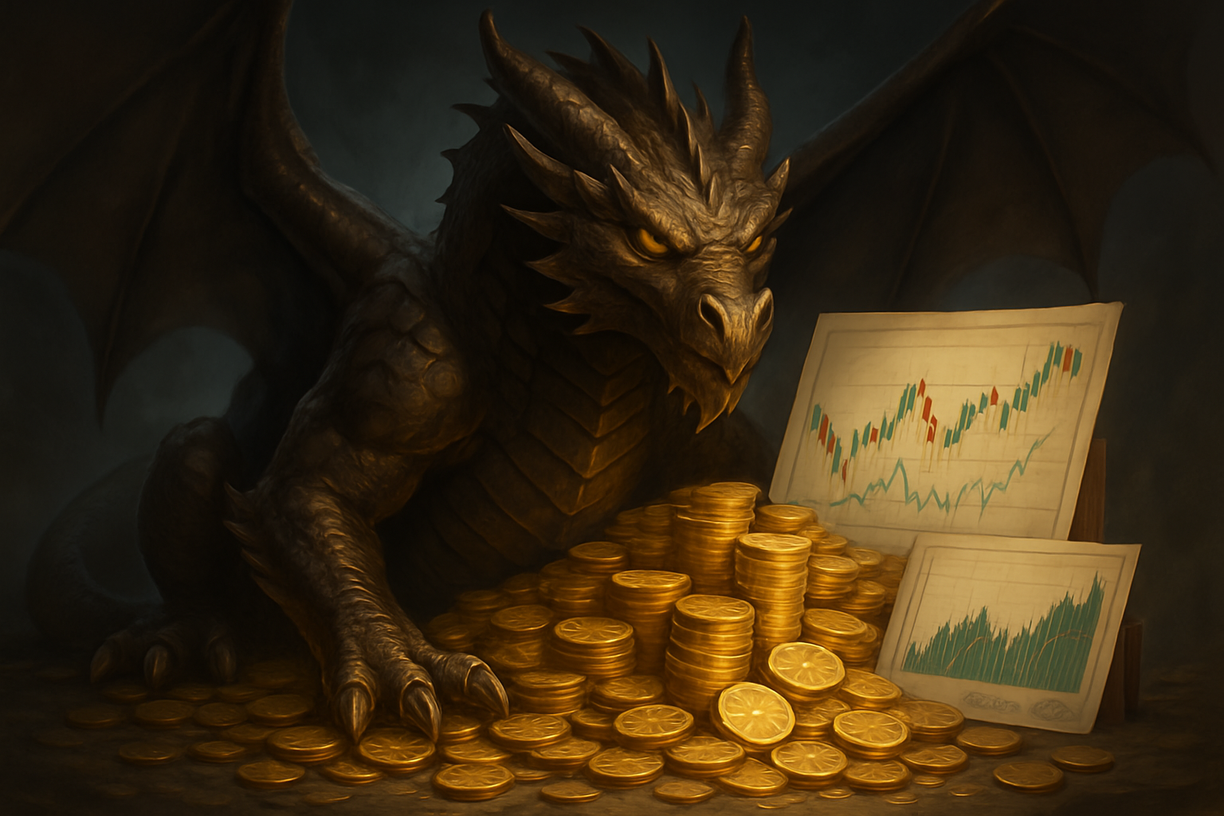
Here's where most traders destroy themselves. They get the direction right but size their positions wrong. Risk management isn't optional - it's everything.
The 1-2% Rule (Non-Negotiable):
-
Never risk more than 1-2% of your account on a single trade
-
£10,000 account = maximum £200 risk per trade
-
£1,000 account = maximum £20 risk per trade
This rule lets you survive 50+ consecutive losses
Position Sizing Formula:
Position Size = (Account Balance × Risk %) ÷ Stop Loss Distance
The Leverage Trap:
-
95% of retail traders use excessive leverage
-
Brokers offer 500:1 leverage - that's financial suicide
-
Professional traders rarely use more than 10:1 effective leverage
High leverage = high emotions = poor decisions
Compounding Power:
Starting with £1,000, making 5% monthly:
-
Month 6: £1,340
-
Month 12: £1,796
-
Month 24: £3,225
Month 36: £5,792
Risk Management Checklist:
□ Position sized to 1-2% account risk
□ Stop loss placed before entry
□ Risk-reward ratio minimum 1:2
□ Maximum 3 open trades simultaneously
□ No more than 6% total account risk across all trades
Emotions & Discipline: The Invisible Killer
Your worst enemy isn't market volatility or breaking news. It's the emotional rollercoaster that happens between your ears. Fear makes you exit winning trades too early. Greed makes you hold losing trades too long. Both destroy accounts.
The Emotional Cycle Every Trader Faces
You start confidently, hit a few winners, then feel invincible. That's when you increase position sizes and take bigger risks. Then comes the inevitable loss. Suddenly you're angry, desperate to get even. You start revenge trading, chasing losses with bigger bets. Sounds familiar?
Building Emotional Discipline
The solution isn't eliminating emotions - that's impossible. It's creating systems that work despite your emotions. Professional traders use trading journals to track not just their trades, but their emotional state during each decision.
Write down how you felt before entering each trade. Were you calm and following your plan? Or were you frustrated from a previous loss? Patterns emerge quickly. Most losing trades happen when you're emotionally compromised.
The Power of Routine
Successful traders treat each trading day identically. They review markets at the same time, follow the same analysis process, and stick to predetermined risk limits. This routine removes emotional decision-making from the equation.
Create a pre-market checklist: Check economic calendar, review overnight news, identify key support and resistance levels, set maximum risk for the day. When you follow the same process every time, trading becomes mechanical rather than emotional.
Common Pitfalls to Avoid (And What to Do Instead)
Most traders make the same mistakes repeatedly. Here are the account killers and how to avoid them:
Overtrading: The Silent Account Killer
More trades don't equal more profits. Quality beats quantity every time. Many traders feel they need to be constantly active to make money. Wrong. The best opportunities come to those who wait.
Instead of trading every setup you see, focus on your highest-probability trades. If your strategy requires specific conditions, wait for those conditions. Boredom isn't a reason to enter a trade.
Strategy Jumping: The Grass is Always Greener
You learn a strategy, have a few losses, then immediately search for a "better" system. This cycle repeats endlessly. No strategy wins 100% of the time. Even the best systems have losing streaks.
Stick with one approach for at least 100 trades before evaluating their effectiveness. Track your results honestly. Most strategies work if you give them time and follow them consistently.
News Chasing: The Adrenaline Trap
Major news events create massive volatility. Inexperienced traders see big moves and jump in, hoping to catch the momentum. Usually, they catch the reversal instead.
Professional traders often step aside during major news releases. The initial reaction is unpredictable, but the follow-through is often more tradeable. Wait for the dust to settle, then trade the clearer trend that emerges.
Lack of Backtesting: Flying Blind
You wouldn't drive a car without testing the brakes first. Yet traders risk real money on untested strategies. Before you trade any system live, test it on historical data.
Backtesting reveals a strategy's strengths and weaknesses. You'll discover its win rate, average risk-reward ratio, and maximum drawdown periods. This knowledge builds confidence when inevitable losing streaks occur.
Frequently Asked Questions
Q: How much money do I need to start forex trading profitably?
You can start with as little as £500, but £2,000-£5,000 gives you more flexibility. The key isn't the amount - it's using proper position sizing. With £1,000 and 2% risk per trade, you're risking £20 per position. That's manageable and sustainable for learning without devastating losses.
Q: What's the difference between demo and live trading psychology?
Demo trading feels like a video game because there's no real money at stake. You'll take bigger risks and hold losing trades longer because it doesn't hurt. Live trading triggers real emotions - fear, greed, and hope. Start with the smallest position sizes possible when transitioning to live trading to minimize psychological shock.
Q: How long does it take to become consistently profitable?
Most successful traders need 1-2 years of dedicated practice and learning. This includes 6-12 months of demo trading, followed by small live account trading. Don't rush this process. The market will be here when you're ready, but your capital won't survive if you hurry.
Q: Should I use Automated Trading systems or trade manually?
Manual trading gives you a better market understanding and adaptability. Automated systems can work, but they often fail when market conditions change. If you're new to forex, learn to trade manually first. You need to understand why trades work before you can evaluate whether a system is worth using.
Ready to Start Your Profitable Trading Journey?
The difference between profitable and losing traders isn't intelligence, luck, or secret strategies. It's discipline, patience, and proper risk management. You now have the blueprint that separates the winning 5% from everyone else.
But knowledge without action is worthless. The forex market rewards those who combine education with practice, and choosing the right broker is crucial for your success.
Why Your Broker Choice Matters
Not all brokers are created equal. The platform you choose can make or break your trading career. You need tight spreads, reliable execution, and educational resources that support your growth as a trader.
What to Look for in a Trading Partner:
-
Regulatory compliance and fund security
-
Competitive spreads and low trading costs
-
Advanced trading platforms with professional tools
-
Educational resources and market analysis
Responsive customer support when you need it most
Take Action with EBC Financial Group
EBC Financial Group stands out as one of the industry's most trusted brokers, offering everything serious traders need to succeed. With regulatory oversight, institutional-grade technology, and comprehensive educational resources, EBC provides the foundation for profitable trading.
Our platform combines user-friendly design with professional-level tools, giving you access to real-time market data, advanced charting capabilities, and the risk management features discussed in this guide. Plus, our educational materials and market analysis help you continue learning and improving your skills.
Your trading success begins with your next decision. Will you join the majority who chase quick profits with inadequate tools? Or will you commit to the disciplined approach that creates lasting wealth, supported by a broker that invests in your success?
The choice is yours. The market is waiting.
Disclaimer: This material is for general information purposes only and is not intended as (and should not be) financial, investment or other advice on which reliance should be placed. No opinion given in the material constitutes a recommendation by EBC or the author that any particular investment, security, transaction or investment strategy is suitable for any specific person.
